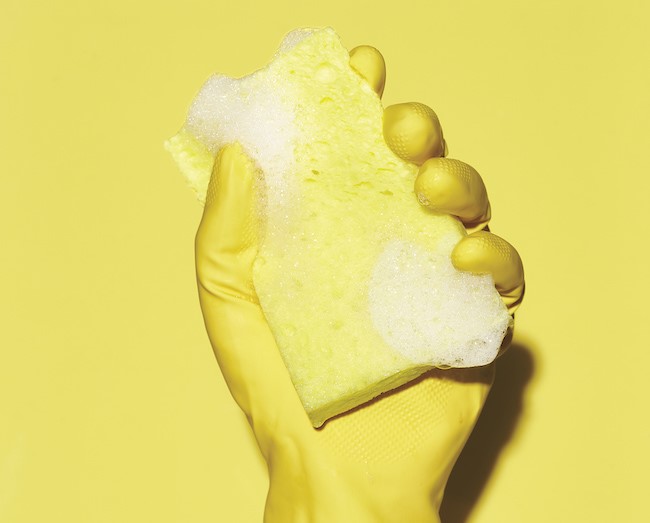Description
First things first, it's important to know the difference between cleaning and disinfecting. Cleaning removes dirt and debris and should always be done before disinfecting an area. Disinfecting uses chemicals to kill germs on cleaned objects and surfaces.
With that in mind, here are a few tips for cleaning and disinfecting germ and bacteria hotspots around the house—including some of the cleaning tools we use.
For more cleaning hacks, don't miss HSTV's Cleaning Hacks episode.
Kitchen Sinks
Kitchen sinks need daily disinfecting. A 2017 study in the Journal of Food Protection found that 45 percent of homes contain a foodborne pathogen, most often present in kitchen sinks. Use warm soapy water, followed by a disinfectant.
Door Handles
Door handles need frequent cleaning. While brass and copper handles have antimicrobial properties, other materials are a hotbed for microorganisms. Washing them with warm soapy water should do the trick.
Towels
Like sponges, towels are a breeding ground for bacteria. The hottest washing cycle on your washing machine and dryer will get them clean.
Hyvee Culinary Expert Tip
Spray glass cleaner on a cloth instead of directly onto mirrors or photo glass to prevent damaging frames and photos.Countertops
Because of high use, there are plenty of opportunities for contamination. These surfaces should be cleaned daily with soap and water, followed by a disinfectant.
Showers
Showers are prone to mildew and mold, which is why the walls and inside curtains should be sprayed daily with a shower spray. Fight the buildup of soap scum by using nonabrasive cleaners and disinfectants.
Sponges
Because sponges can harbor bacteria, it’s important to keep them clean. To sanitize sponges, run them in the dishwasher on the hottest and longest cycle with a dry cycle to follow, or soak them in a mixture of one-half teaspoon bleach and one quart of water for 1 minute, then allow to air dry. You can also sanitize wet, metal-free sponges by microwaving for 1 minute. Microwaving dry sponges and metal scrubbers is a fire hazard.
Toilets
When it comes to cleaning toilets, it’s not just bacteria you’re after. Hard water deposits can also build up. Use a long-handled brush and toilet bowl cleaner on the interior, and use a nonabrasive cleaner and disinfectant on the seat.
Brooms
Broom bristles are designed to trap dust and debris and tend to accumulate excess dirt. To clean, dismantle the brush, shake out the larger debris, then use your fingers and a paper towel to comb the bristles. Finish by cleaning the bristles with soapy water.


